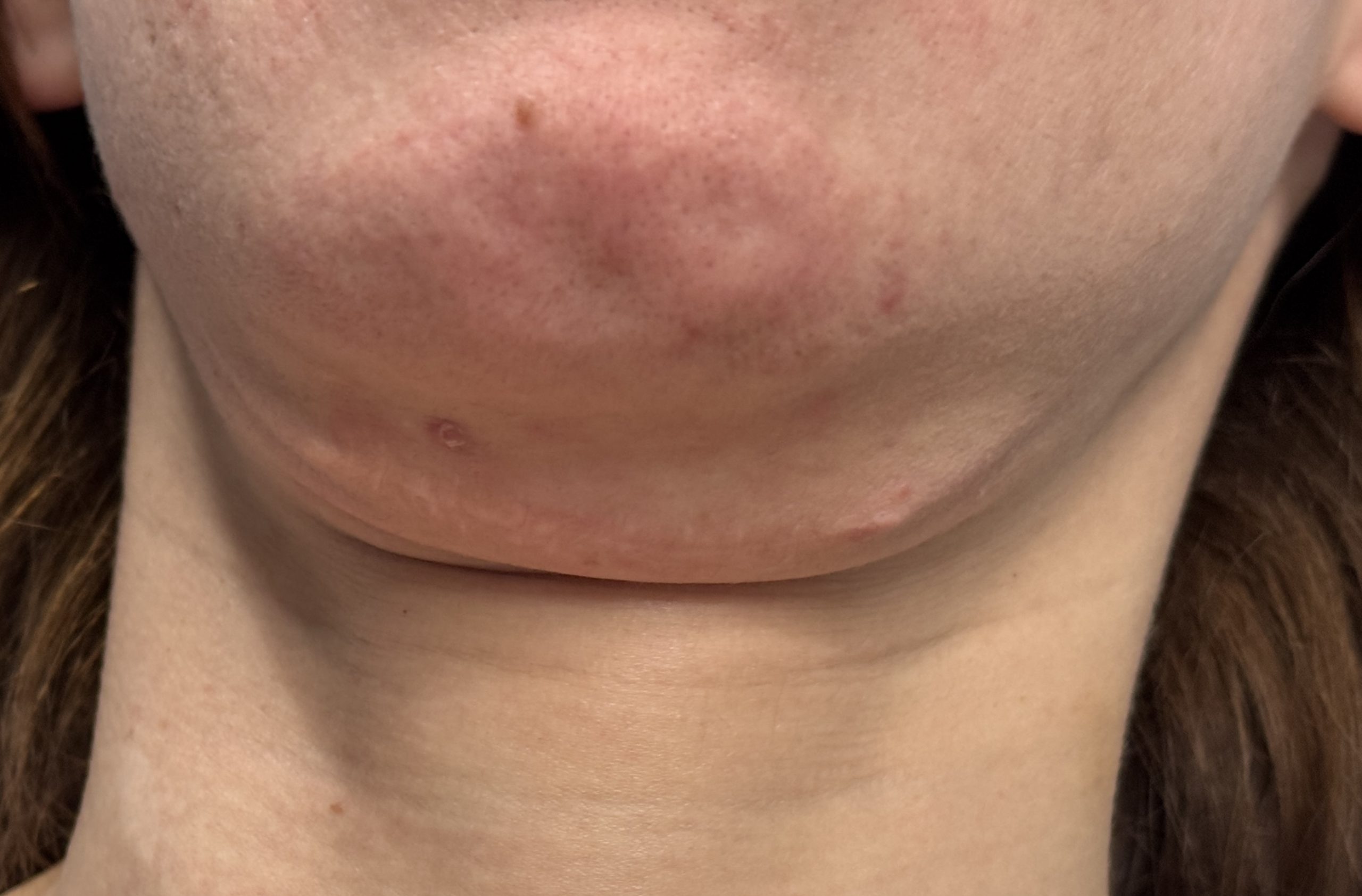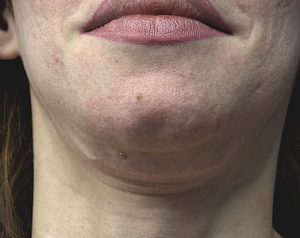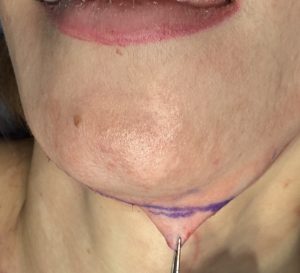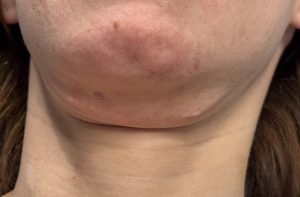Background: The submentoplasty procedure can be done by a variety of techniques. But what they all share is the need for a skin incisions. This can be a small nick incision right under the chin for liposuction to an elongated inverted T-shaped excision for a direct necklift. But the most common submentoplasty scar is a curved shaped one under the chin pad in a skin crease for direct defatting and medial platysmal muscle manipulations. This incision is not usually very long as it is an access incision. In less commonly performed submentoplasties some minor amounts of skin may also be removed through half moon shaped or even minor t-shaped skin excisions.
In rare cases I have seen submentoplasty scars in the middle of the neck placed between the bottom of the soft tissue chin pad and the thyroid cartilage. While not an ideal location for a neck scar if it is small enough it can be reasonably well hidden and will heal well. But recently a came across a submentoplasty scar revision that probably violates all of the submentopalsty scar considerations.
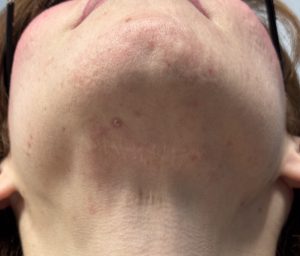
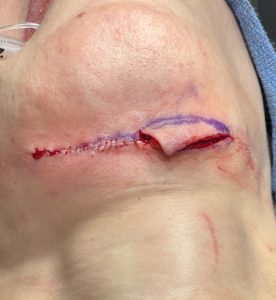
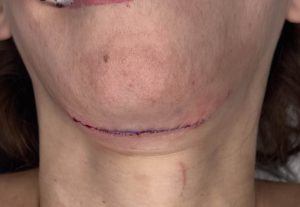
Placing a long incision horizontally across the central neck for an aesthetic neck reshaping procedure in a young patient is never going to produce a good scar. It would certainly be considered an unacceptable approach for the exact scar reason that this young female had. It is a difficult problem to ever resolve completely as the length and location of the scar can never be eliminated. The improvement by a scar revision is limited to scar width reduction, suture track elimination and dog ear removals.
Key Points
1) A poorly executed submentoplasty procedure can produce an unacceptable scar.
2) The most common submental scar problem is dogears on each end.
3) In this case an adequate sibmentoplasty scar revision requires skin excision and flap advancement.
Dr. Barry Eppley
World-Renowned Plastic Surgeon

